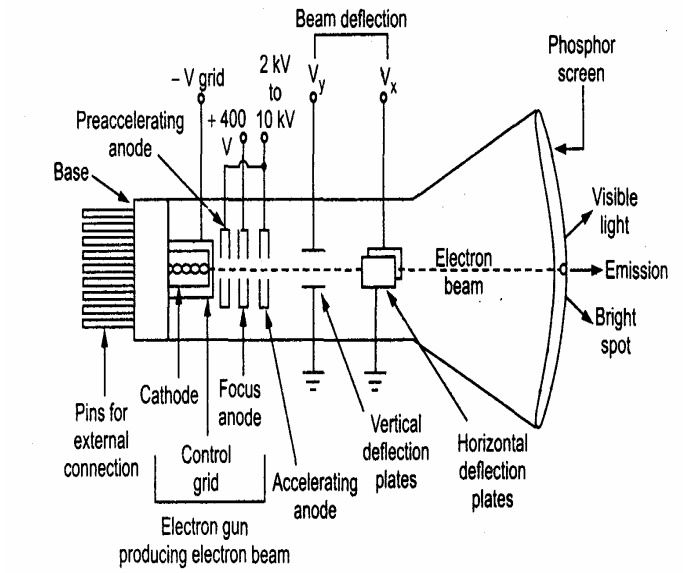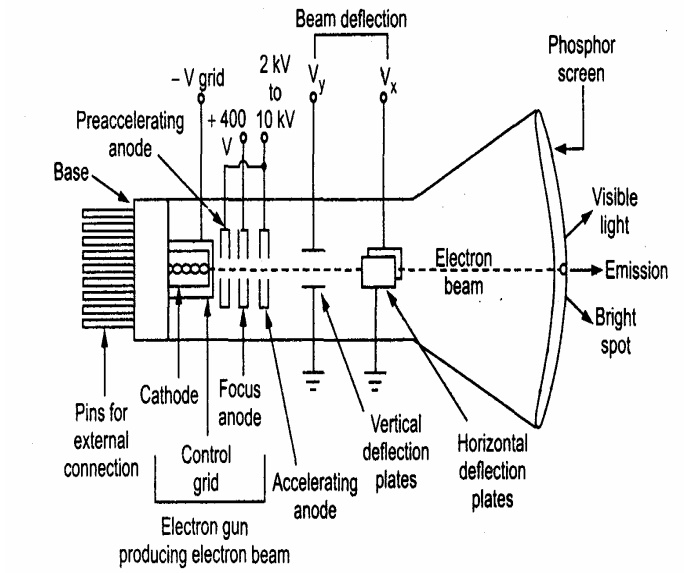Chapter: Measurements and Instrumentation : Storage and Display Devices
CRT(Cathode Ray Tube) Display and its Parts

CRT Display
The device which allows, the amplitude of such signals, to be displayed primarily as a function of time, is called cathode ray oscilloscope. The cathode ray tube (CRT) is the heart of the C.R.O. The CRT generates the electron beam, accelerates the beam, deflects the beam and also has a screen where beam becomes visible as a spot. The main parts of the CRT are
i) Electron gun
ii) Deflection system
iii) Fluorescent screen
iv) Glass tube or envelope
v) Base

Electron gun
Ø The electron gun section of the cathode ray tube provides a sharply focused, electron beam directed towards the fluorescent-coated screen.
Ø This section starts from thermally heated cathode, emitting the electrons.
Ø The control grid is given negative potential with respect to cathode.
Ø This grid controls the number of electrons in t beam, going to the screen.
Ø The momentum of the electrons (their number x their speed) determines the intensity, or brightness, of the light emitted from the fluorescent screen due to the electron bombardment.
Ø The light emitted is usually of the green colour.
Deflection System
Ø When the electron beam is accelerated it passes through the deflection system, with which beam can be positioned anywhere on the screen.
Fluorescent Screen
Ø The light produced by the screen does not disappear immediately when bombardment by electrons ceases, i.e., when the signal becomes zero.
Ø The time period for which the trace remains on the screen after the signal becomes zero is known as “persistence or fluorescence” .
Ø The persistence may be as short as a few microsecond, or as long as tens of seconds or even minutes.
Ø Medium persistence traces are mostly used for general purpose applications. Ø Long persistence traces are used in the study of transients.
Ø Long persistence helps in the study of transients since the trace is still seen on the screen after the transient has disappeared.
Glass Tube
Ø All the components of a CRT are enclosed in an evacuated glass tube called envelope.
Ø This allows the emitted electrons to move about freely from one end of the tube to the other end.
Base
Ø The base is provided to the CRT through which the connections are made to the various parts.
Related Topics